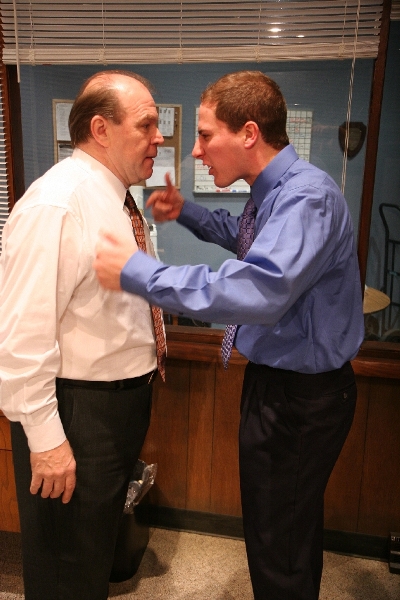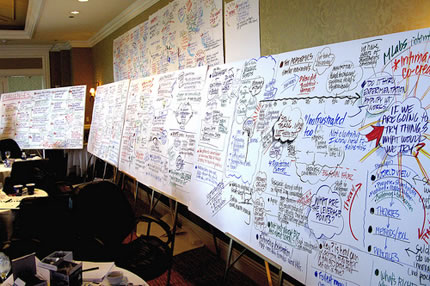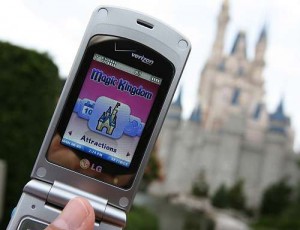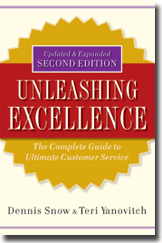Customer Service Improvement – The First Step
 Over and over we see customer service initiatives stall because of impatience. The key players involved in the improvement process take on too much at one time, overwhelming themselves as well as the organization. Everyone ends up frustrated, the initiative is abandoned, and employees are rightly skeptical of subsequent initiatives.
Over and over we see customer service initiatives stall because of impatience. The key players involved in the improvement process take on too much at one time, overwhelming themselves as well as the organization. Everyone ends up frustrated, the initiative is abandoned, and employees are rightly skeptical of subsequent initiatives.
A planned, step-by-step approach dramatically increases the likelihood of success of a service improvement initiative. Most organizations should plan on 2-5 years before feeling that the elements of the service initiative are “inculturated.” While that may seem an unreasonably long time, the reality is that the organization’s current culture took years to evolve and expecting instantaneous change is simply unrealistic.
In practice, once management agrees a change is needed, they want the change to happen right now, with no fuss. But change with no fuss is probably no change at all – at least not one that is going to result in a significant improvement. Real change has moments of confusion, pain, doubt, argument and even tears. Letting go of the “old way” is never easy. And the more angst the change is causing, the more likely the change is needed. Complacency in today’s marketplace can be fatal to an organization.
Take the time to plan each phase of the initiative, following the chapters of Unleashing Excellence as a guide. While the chapters aren’t strictly linear, they’re pretty close. Do the work of each of the Leadership Actions in the order presented; you’ll be rewarded by an improvement initiative that actually results in improvement.
Innovation Stimulation
 Today’s Wall Street Journal has an interesting article, “Entrepreneurs Seek to Elicit Workers’ Ideas.” The premise of the article is that a company’s employees are often a vast and untapped reservoir of ideas for improving the business. One company CEO is quoted as saying, “Wow, we have a lot of smart people back here, and we’re not tapping their knowledge.”
Today’s Wall Street Journal has an interesting article, “Entrepreneurs Seek to Elicit Workers’ Ideas.” The premise of the article is that a company’s employees are often a vast and untapped reservoir of ideas for improving the business. One company CEO is quoted as saying, “Wow, we have a lot of smart people back here, and we’re not tapping their knowledge.”
We heartily agree.
A company’s employees deal with the same challenges, issues, and complaints day in and day out and typically know exactly what ticks off customers. The problem is that many organizations simply don’t ask their employees to help identify and solve the issues. Or they do ask (because the employee survey said that management never asks for input) but never take action on the suggestions. Which is too bad, since our experience shows that employee solutions are usually MUCH less expensive than management’s solutions.
The one quibble we have with the WSJ article is the bias for offering cash incentives for submitting ideas – $50 per implemented idea; $100 for 100 innovative ideas, etc. We like money as much as anyone, but we believe that improving the organization should be part of the organization’s culture and participating in the forward movement of the company should simply be part of the job description.
We’ve seen many organizations implement a “bounty” for ideas only to find that employees begin hording ideas out of fear that someone will steal them for the bounty, or become enraged that “Joan got $50 for her stupid idea, and I got nothin’ for my great idea.” And how about the employee who gets $50 for an idea that saves the company $10 million? Trust us; someone is going to feel shortchanged.
Check out the WSJ article, but also know that we feel collaboration is the name of the innovation game. The Service Obstacle System described in Unleashing Excellence provides several tools for getting your employees involved in identifying and eliminating (or alleviating) barriers to excellence. The Continuous Service Improvement Meeting Agenda is a good place to start.
Do your employees view innovation as a part of their jobs?
Solving a Customer Frustration
 One of the best ways to distance your organization from the competition is to solve a problem that frustrates your industry’s customers. A recent Orlando Sentinel article provides a great example of this approach: Disney by Cell Phone.
One of the best ways to distance your organization from the competition is to solve a problem that frustrates your industry’s customers. A recent Orlando Sentinel article provides a great example of this approach: Disney by Cell Phone.
The number one guest complaint at Walt Disney World is about long wait times for the rides. And over the years Disney World has implemented several tools to help minimize the problem. Tools include:
- Wait time signs
- Entertainment while waiting in line
- Making the line part of an attraction’s theme or “show”
- Tip boards around the park with posted wait times for popular attractions
- FastPass® (a mechanism for making a “reservation” for particular attractions)
Disney World (and Disneyland) has just introduced a new way to help reduce wait time frustrations for Disney guests – “Mobile Magic.” It’s a smartphone application that allows guests to get real time information about attraction wait times, character greetings, and other park events. The application allows guests to get the most out of their Disney visit by helping them make informed decisions about what to do next.
The full application of Mobile Magic is only available to Verizon subscribers right now, but a scaled down version is available to subscribers of other mobile services. The full application will soon be available to anyone with a cell phone.
The reason for sharing this story isn’t to brag about Disney, it’s to point out an example of a relentless quest to solve an ongoing customer frustration. Every industry has its inherent customer frustrations, and most companies just accept them as givens. But customers don’t accept them as givens; we see them as reasons to look for alternatives.
You don’t have to do an expensive survey to find out what frustrates your customers. You know exactly what frustrates them. Those recurring complaints and those negative customer interactions that burn out your employees tell you what the problems are. What’s needed is action.
So we challenge you to pick one customer frustration that you’ll commit to solving. Start small if necessary; but commit to one. Bring in some employees from your operation and go to work coming up with and implementing a solution. Or you can use this link to a Service Improvement Meeting agenda which guides you through a team meeting for identifying and developing solutions to customer frustrations. Once you’ve solved a problem, go on to another one.
Of course, Unleashing Excellence devotes an entire chapter to solving customer frustrations – “The Service Obstacle System.” The approach outlined in the chapter provides a step-by-step approach for crafting a barrier-busting system.
Imagine if you just identify and solve one customer frustration per quarter. Four improvements a year is huge! It will put you in the “world-class” category, and customers will wonder, “Why can’t other organizations do it like they do?”
Please send us your questions, or share examples of how your organization (or any other organization) has solved a customer frustration. We hope to make this blog a forum for best practices!
